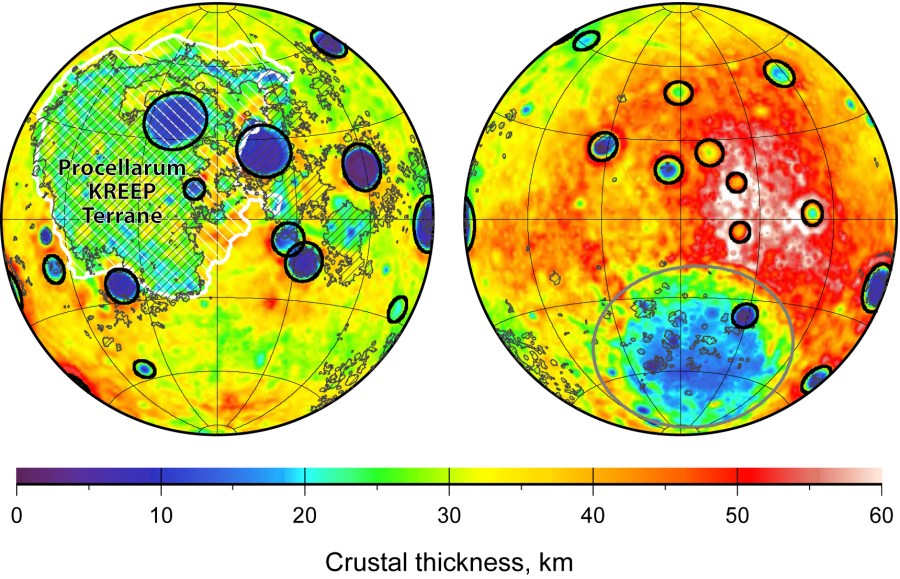Moon’s craters remeasured

Maps from the GRAIL spacecrafts reveal more large craters (big circles) and thinner crust (blue) on the moon's nearside (left) than on the farside (right), where the crust is thicker (red).
SCIENCE/AAAS

Maps from the GRAIL spacecrafts reveal more large craters (big circles) and thinner crust (blue) on the moon's nearside (left) than on the farside (right), where the crust is thicker (red).
SCIENCE/AAAS